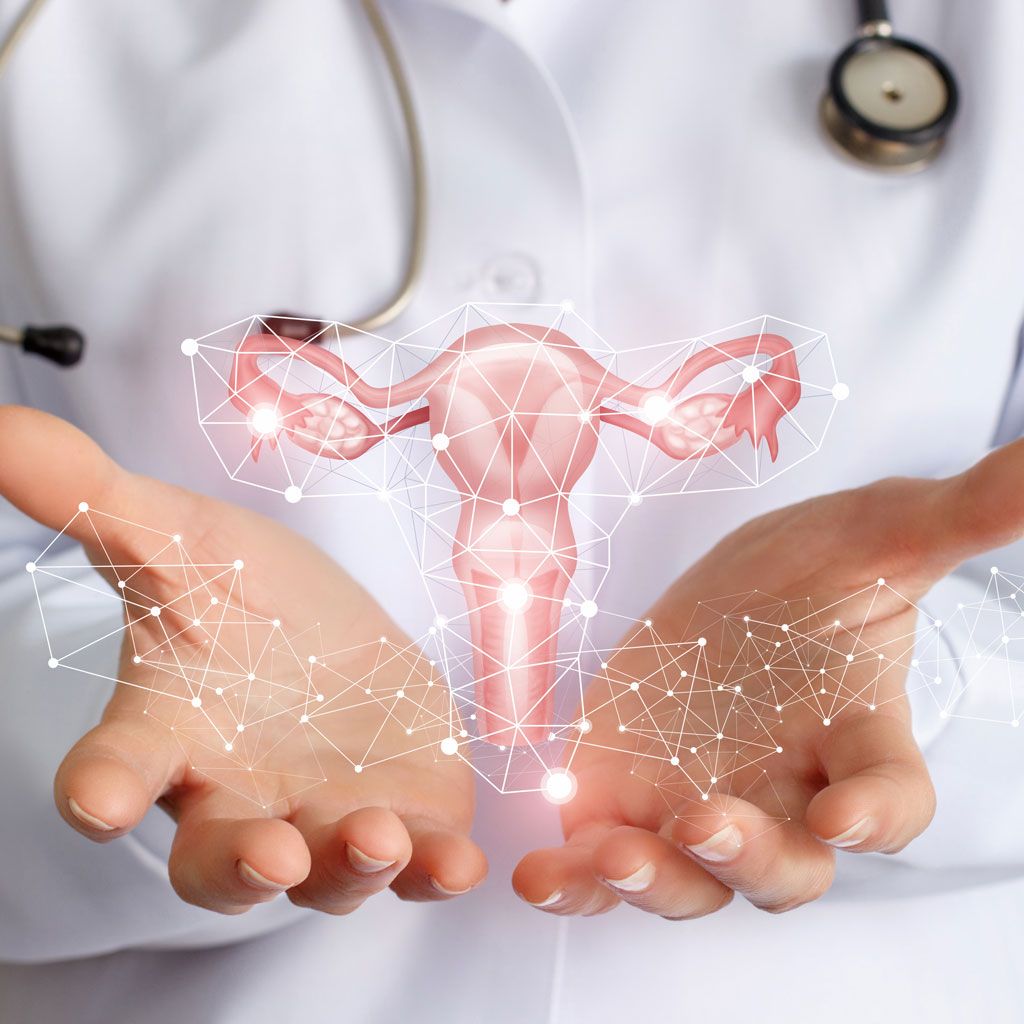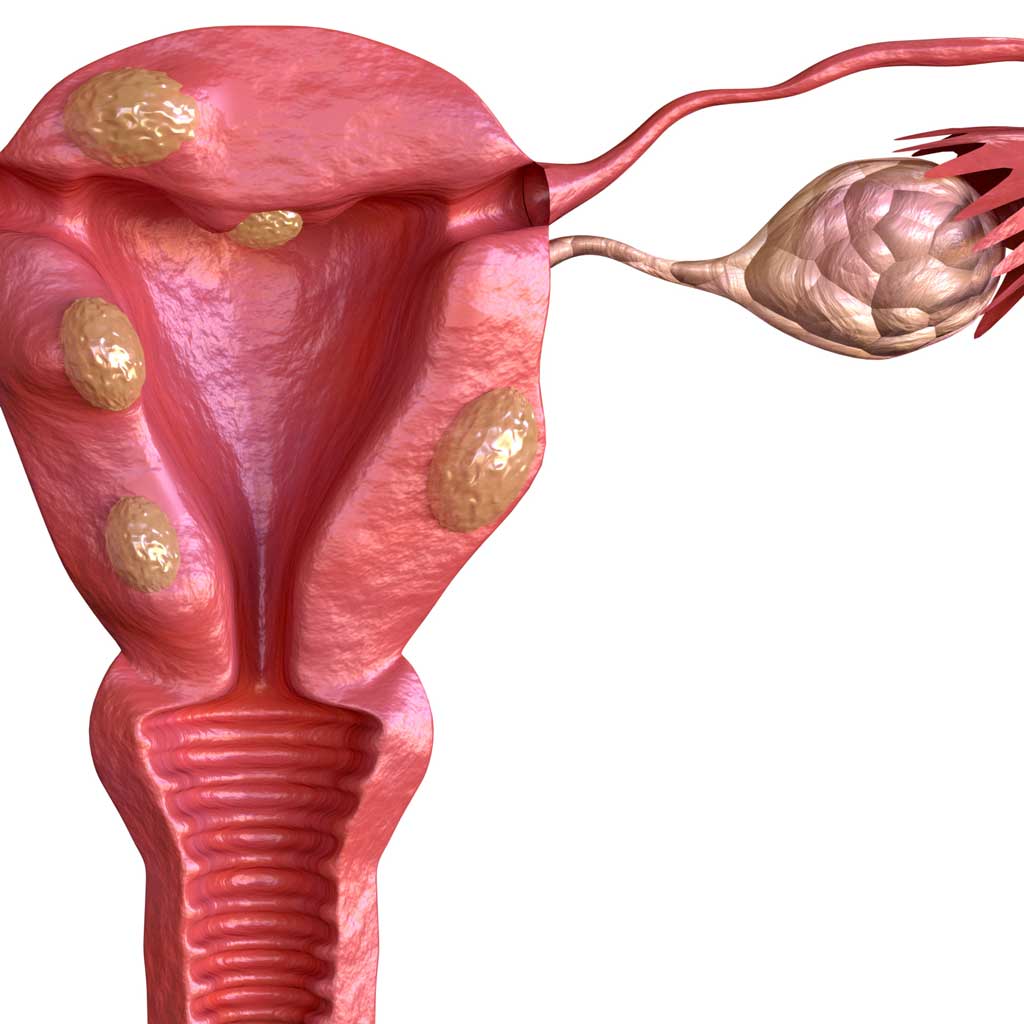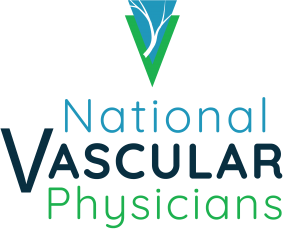Uterine Fibroids: Don’t Let Pain and Bleeding Control Your Life
Living with fibroids can feel exhausting — physically and emotionally.
Heavy bleeding, unpredictable cycles, and constant pain can take over your days. Many women describe planning their lives around their periods, skipping events, and even avoiding wearing white because of the fear of bleeding through in public.
You deserve to feel confident, comfortable, and free again. At National Vascular Physicians, we specialize in Uterine Fibroid Embolization (UFE) — a safe, minimally invasive procedure that shrinks fibroids and restores your quality of life without major surgery.

What Are Uterine Fibroids?
Uterine fibroids (also called leiomyomas or myomas) are non-cancerous growths that develop in the wall of the uterus. They can be small and unnoticeable — or large enough to distort the shape of the uterus and cause severe symptoms.
Up to 80% of women will develop fibroids during their lifetime, and black women are 2–3 times more likely to develop them. While fibroids are common, suffering from them doesn’t have to be.
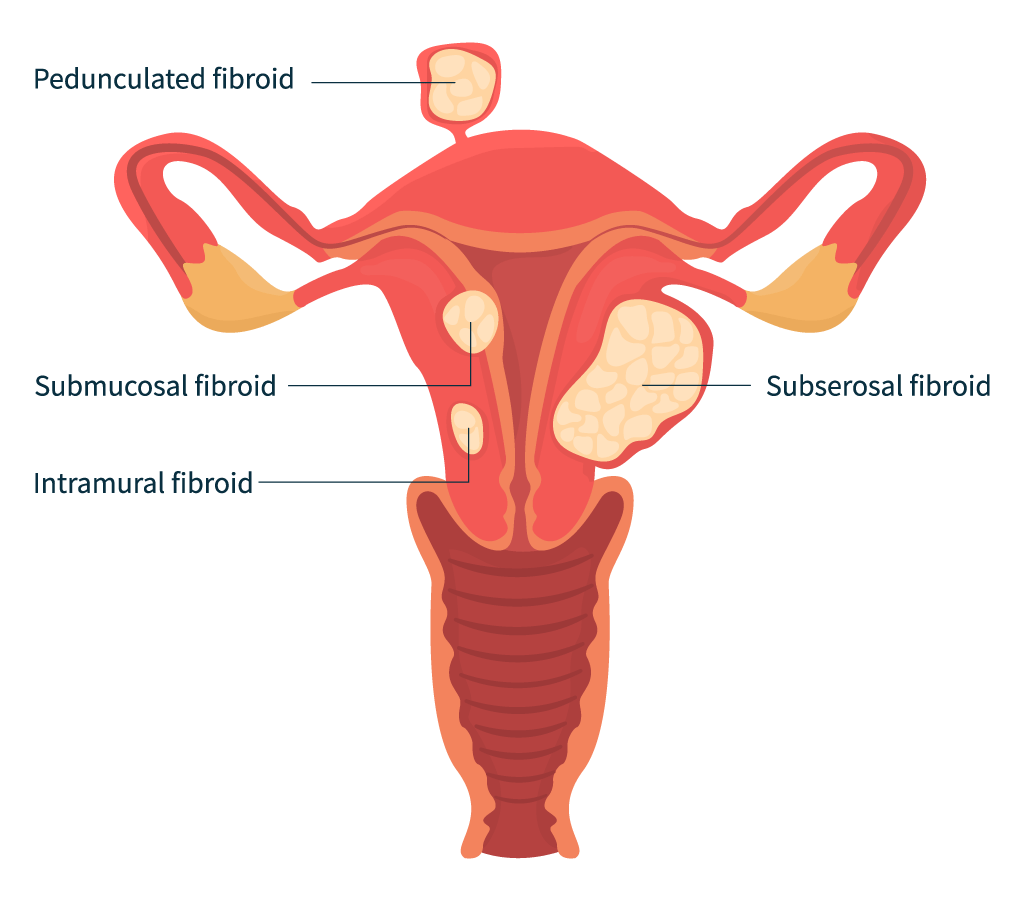
Common Symptoms of Uterine Fibroids
Fibroids can cause a range of symptoms that affect your daily life. You may notice:
- Heavy menstrual bleeding that soaks through pads or tampons every hour
- Periods lasting more than five to seven days
- Pelvic pressure or bloating that feels like constant fullness
- Back or leg pain
- Fatigue and anemia from blood loss
- Pain during intimacy
- Frequent urination or bladder pressure
If you feel like you can’t plan a day without worrying about an “accident,” it’s time to explore treatment options that bring you relief and peace of mind.
A Minimally Invasive Solution: Uterine Fibroid Embolization (UFE)
UFE is a minimally invasive, image-guided procedure performed by an interventional radiologist that cuts off blood flow to the fibroids, causing them to shrink naturally. There are no large incisions and no removal of the uterus.
Here’s how it works:
Your physician makes a tiny pinhole incision in your wrist or groin and inserts a thin catheter guided by X-ray imaging. Small, medical-grade beads are injected into the arteries that feed your fibroids, blocking their blood supply. The fibroids then shrink over time, and symptoms gradually improve.
The entire procedure typically takes less than an hour, and you go home the same day. Most women return to their normal activities within a week.
Why Women Are Choosing UFE
UFE is not only gentle on your body — it’s proven to be effective. Clinical studies show:
- Over 90% of women experience significant symptom relief after UFE.
- More than 95% of procedures are technically successful.
- The reintervention rate after five years is around 10%, meaning most women don’t need another major treatment.
- The American College of Obstetricians and Gynecologists (ACOG) recognizes UFE as a safe and effective treatment for fibroids.
- Unlike surgery, UFE allows you to keep your uterus, recover quickly, and get back to life with minimal downtime.
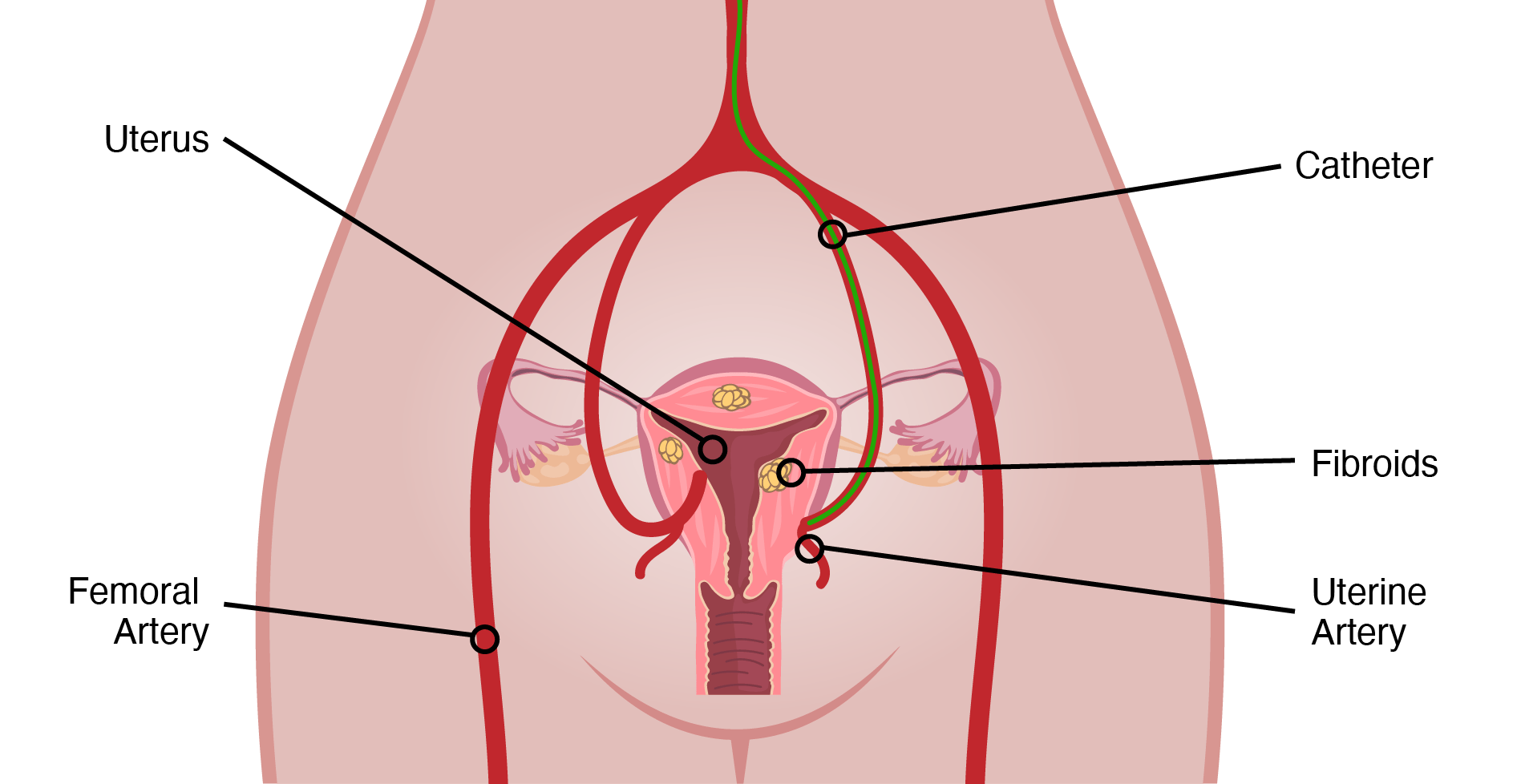
Benefits of UFE
Women who undergo UFE commonly report:
- Dramatic reduction in heavy bleeding
- Relief from pelvic pressure and pain
- More energy and improved mood
- Preservation of the uterus and femininity
- Minimal recovery time (days instead of weeks)
- Covered by most major insurance plans
After UFE, many women describe feeling lighter — both physically and emotionally — with renewed confidence to live freely again.
Is UFE Right for You?
You may be a good candidate for UFE if you:
- Have symptoms caused by uterine fibroids
- Want to avoid hysterectomy or major surgery
- Prefer a minimally invasive option
- Are not currently pregnant
- Have health conditions that make surgery higher-risk
Real Women. Real Relief.
I had the UFE procedure done a week ago, and I already feel amazing, no regrets. From the moment he told me about the procedure, I knew I wanted to give it a shot. I can say that I’m already seeing results. I had my first cycle and it was a breeze, VERY mild pain, it was shorter and lighter. This place is a 10/10 if you’re thinking of getting the UFE procedure done, don’t think twice, DO IT!
– K.F.
They saved my life! I suffered from heavy bleeding and was not anemic. I had the UFE procedure and now my blood levels are back! It was easy and recovery was a breeze. The staff is very helpful and makes sure you have what you need. Thanks Dr. Kim!
– M.H.
I had UFE with National Vascular Physicians, and the care I received was outstanding in every way. Dr. Kim is everything you hope to find in a physician. He is a nationally renowned expert in his field with many years of experience performing these procedures. He is also kind, empathetic, patient, approachable, and extremely generous with his time and information.
– P.M.
Judy’s UFE Story
Shantice’s Story
Victoria’s Story
Pam’s UFE Story
Other Fibroid Treatment Options
For some women, other treatment paths may be appropriate.
- Waiting – for fibroids with no symptoms
- Hormone therapy – may help temporarily but symptoms often return
- Focused ultrasound or ablation – for smaller fibroids
- Surgical options (Myomectomy or Hysterectomy) – for women preferring or requiring surgery
At National Vascular Physicians, we’ll help you understand all your options and build a personalized plan that aligns with your goals.
Why Choose National Vascular Physicians
Our board-certified interventional radiologists have extensive experience performing UFE with precision and compassion. We combine leading-edge imaging technology with a patient-first approach — making sure you feel informed, supported, and comfortable every step of the way.
Our mission is simple: to help you rediscover freedom from pain and restore your confidence through safe, effective, minimally invasive care.
Take the Next Step Toward Relief
You don’t have to let fibroids control your life another day. Take the quiz below to see if you’re a candidate for UFE, fill out the form, or give us a call!
Pelvic Congestion Syndrome (PCS)
What is pelvic congestion syndrome?
Pelvic congestion syndrome (PCS) is a condition that causes chronic pelvic pain. This syndrome is thought to be caused by hormonal and physical changes during pregnancy which can lead to buildup of pressure in the veins around ovaries. It occurs most frequently in women between the ages of 20 and 45, more commonly in women with a history of multiple pregnancies. Women are more likely to develop PCS if members of their family have had it.
Symptoms of Pelvic Congestion Syndrome
Common symptoms associated with pelvic congestion syndrome:
- Dull ache or pain in the pelvis or lower back
- Worsening symptoms with standing or during menstruation
- Irritable bladder that makes it hard to control urination
- Discomfort during or after sexual intercourse
- Bulging veins in the inner thighs, butt, vagina and/or vulva
Ovarian Vein Embolization
If you and your healthcare provider determine that you have Pelvic Congestion Syndrome (PCS), it is a good idea to discuss the various treatment options available, including ovarian vein embolization (OVE).
In ovarian vein embolization, an Interventional Radiologist (IR) passes a catheter (small tube) through a vein in the groin using specialized x-ray equipment. Once the catheter is appropriately positioned in the ovarian vein, the vein is blocked using small metallic coils and/or a sclerosing agent (Sotradecol) to seal the vein. This prevents reflux of blood into the pelvis greatly reducing pelvic pain and varices. Once embolization is complete the catheter is removed. The entire treatment typically lasts 1-2 hours and is an outpatient procedure. Recovery typically takes less than one week. Reported success rates are >85%.


Is Ovarian vein embolization right for me?
You may be a candidate if:
- You are experiencing pelvic pain and diagnosed with enlarged ovarian veins
- You do not want to take medications which may impact your hormone levels
- You are experiencing side-effects of medications
- You do not want surgery
- You do not want the potential risks of surgery
- You are a poor surgical candidate
Key Advantages
Ovarian vein embolization is a safe treatment option and like other minimally invasive procedures has significant advantages over conventional open surgery.
Benefits
- Multiple research studies demonstrating significantly improved pelvic pain after embolization
- Same day procedure
- No general anesthesia required
- No risk of hormone changes
- No surgical risk
Potential Risks
- Allergic reaction
- Infection
- Bruising or bleeding at the puncture site
Other Treatment Options
Non-invasive treatment options
- Hormonal medication to block ovarian function and/or pain
Surgical treatment options
- Surgery to block or remove damaged veins
- Hysterectomy to remove the uterus and ovaries

